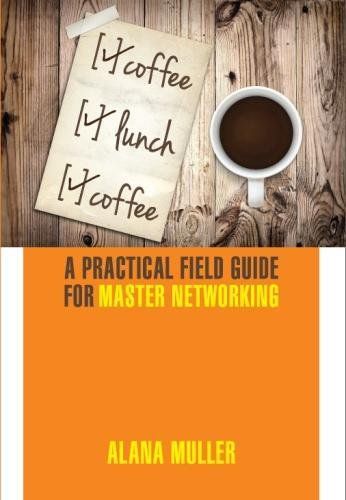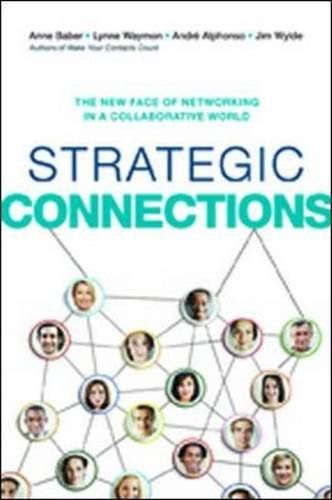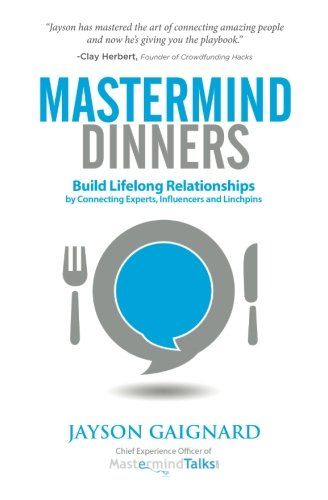Joe Dixon • • 8 min read
7 Mental Life Hacks That Will Give You the Edge in Social Situations

Whether you have a job that entails regular conferences or you’re a freelancer who gets to work like a hermit, you’ll probably need to network at some point in your life. Here’s how to do it so everyone you touch gains from the experience.
It’s an indisputable fact that personal contacts open doors. One classic study, outlined in the book Getting a Job, showed that among the 282 men surveyed, 56 percent had found their jobs through personal contacts, whereas only 19 percent had found theirs through job advertisements and 10 percent through applications of their own initiative.
What have we learned here? Not that sending a cold job application is futile (though in this day and age, it sort of is), but that connecting with people professionally really matters. In good times and bad, your network gives you a supportive environment and keeps you open to developments in the job market.
The problem is that most of us don’t actually like the chilly concept of networking. How then do you start connecting with others professionally when you’d prefer to be wall-flowering it in the convention center’s darkest corner?
Whether you’re a complete newbie at the networking game or you’d like to refine the skills you’ve already acquired through your professional life, I’ve collected 7 core ways to improve your networking skills and make meaningful connections. Hit the open bar, toss back a confidence cocktail, and let’s get down to business.
1. Be fully present and control your stress levels.

The first thing to remember when speaking to a professional contact is that your mind and body should be present and calm. Set things off on a note of calm confidence by offering a firm and warm handshake.
Critical to being present is listening, since listening will help your body and mind stay present and keep the conversation moving smoothly. Therefore, pay attention to your partner’s responses and how they connect to your professional interests.
But while you’re attentively conversing, how do you control your stress levels?
First, use eye contact. Remember to look the person you are speaking with in the eye and avoid looking away when either of you are talking. If you feel your nerves taking over and you find yourself sweating and short of breath, consciously slow down and deepen your breathing. This has a calming and cooling effect.
Also, Muller notes, it’s important to keep hand movements to a minimum. So if you have nervous hands, focus on eye contact and your hands should follow naturally. You can also keep them folded to minimize their twitchiness.
More on mastering yourself (and networking) at the Stairway to Wisdom.
2. Be generous and loyal—these traits are the cornerstones of connection.

Generosity is a magical thing. It builds trust and mutual understanding, cementing and deepening our relationships with others. But remember that each relationship isn’t a short-term investment, so don’t expect to have every favor returned instantly. Relationships are not a finite entity, like a cake that gets smaller and smaller with every slice someone takes. Relationships are more like muscles: they grow and strengthen the more you use them!
People who are neither generous nor helpful, who simply wish to rid themselves of their business cards and only ever think of how to work things to their own advantage, are doomed to go through life (and that networking event) powerless. Their behavior pushes others away.
In order to move beyond a self-centered view, and to truly strengthen your relationships with the people in your network, you need to show constant loyalty to them. Loyalty can take many forms; for example, by offering emotional support when someone is going through a rough divorce, or by donating your time to help someone with problems that lie outside of their professional life. A half hour of your time here and there could potentially pay you back in a life-long relationship.
In a nutshell: the best networkers never ask “How can others help me?” but rather “How can I help others?” The basic thinking behind this is clear and simple: the more ready you are to help others, the more ready they will be to help you in return.
Learn the other traits of super networking at the Stairway to Wisdom.
3. Try out “powerless communication” for an unexpected advantage

If someone asked you what kind of communication creates the most success, you’d probably say it requires confident, assertive language. But recent studies show that in contrast to raising voices and displaying conviction, we can succeed by communicating in a powerless way.
Powerless communication involves focusing on the other person; for example, by seeking advice and asking questions. Rather than being domineering, which evokes resistance, this softer approach has a remarkably persuasive effect. This technique comes easily to givers, as they are naturally interested in others.
The persuasiveness of powerless communication was compellingly demonstrated by a study of optometry companies: opticians who were most clearly givers were also the top sellers. The reason was their communication style. For example, optician Kildare Escoto differs from most salespeople in that rather than pitching a sale, he asks customers about their needs and lifestyle. Asking questions instills trust in customers and enables him to better serve them. As a result, Escoto is LensCrafters’ number one giver and salesperson.
Learn other invaluable communication skills over at the Stairway to Wisdom.
4. Do it the introverted way.

The tension between introverts and traditional networking arises because extroverts and introverts prefer different types of interaction: extroverts enjoy small talk, whilst introverts prefer in-depth conversation. For introverts, networking often consists of too much small talk which they can’t connect to.
But there are other ways introverts can completely own networking—and ways that extroverts can benefit from a natural-to-introverts technique. It sounds crazily simple, but just focus on one-on-one conversation. This allows you to get to know the other person in depth, and increase rapport by adapting to each person’s need.
This is a great technique for a couple of reasons: you can find out about the way the other person thinks – like if they prefer abstract concepts or a hands-on approach. And in a focused one-on-one conversation, people are also more likely to open up and share intimate details, which will deepen the relationship.
Learn more about stellar leadership over at the Stairway to Wisdom.
5. Be a strategic networker by remembering people’s names and broadening your circle of acquaintances.

If you want to develop your network, it’s obviously not enough for you to just show up to conferences and events. In order to network effectively, you’ll have to actually meet people and keep focused on building a trusting relationship. This can be daunting to some people, so here are some tips to help you manage:
First, be sure to learn people’s names and make sure they remember yours as well. When meeting someone new, repeat your name to them. For example: “I’mThomas, Thomas Smith.” Likewise, you should repeat their first name in order to better remember it: “It’s nice to meet you, Louise.”
Then, pay close attention to what your contact reveals about her character and competencies. Maybe she is a great accountant, just when your firm is looking for one.
Finally, when it’s time to end the conversation with a new contact, find a way to turn it into a greater networking opportunity, both for you and for them, by broadening the circle.
So when you’re ready to end your conversation, ask them to introduce you to someone in your field. For example, if you’re an architect, just ask if they know anyone at the conference who is also involved in architecture. You could also introduce your new contact to others: “John, I’d like to introduce you to Laura. She’s also a doctor.”
Learn how to be a superconnector and master non-cringy networking over at the Stairway to Wisdom.
6. Show you care by reconnecting with your connections and introducing them to others in your network.

Imagine that you just met the CEO of your favorite company at the conference you’re attending. The two of you had an interesting, pleasant conversation, and she even gave you her contact details. You’re feeling good – but what now? To show that you care and to nurture the relationship, it’s time to reconnect!
Reconnecting could be as easy as sending an email. Simply thank the person for the pleasant conversation, and add an extra valence of personalization by including something that they’ll surely be interested in (like a news article, or a link to a podcast you discussed).
Another way to create value for your new connection is to introduce them to the right people in your network. In other words, you connect your connections for the greater good.
For example, say that Marie, a software developer, goes to a tech conference, where she is introduced to Annette, who heads a coding academy. Coincidentally, Annette is looking for a speaker for another programming conference, and when Marie goes back home, she remembers her former colleague Eric, a gifted C++ developer, and sets him up with Annette. In doing so, Marie has showed Annette that she cared about their conversation by reconnecting, helped Eric get in touch with many young programmers, helped Annette find a speaker and added a new contact, Annette, to her network. Everybody wins!
Be the most powerful power connector by reading our great selection of book breakdowns over at the Stairway to Wisdom.
7. Create meaningful personal connections with a private gathering, like a dinner party.

Many people, especially hard-working business people, lead pretty lonely work lives. After another 12-hour day, the typical entrepreneur isn’t exactly longing to hang with friends. Rather, daily stress and work travel make it difficult to connect with people, at work or even in the “real” world.
But as most people will agree, human connection, not simply a good paycheck, is what makes life meaningful, and besides, the kind of connecting you get from networking is vital in unlocking new opportunities.
So why not merge the necessity of making connections with the joy of sharing a meal in a cozy room that’s buzzing with conversation? In fact, why not invite to people you meet at your next conference over for dinner!
Being a guest at a hosted dinner with people is one thing. But organizing the dinner yourself is an opportunity for both having a nice, relaxed time and networking on a whole new level.
If you want your mastermind dinner to be memorable, a detail that makes a big difference is the size of your dinner. Four to eight guests is an ideal size, as fewer guests makes a dinner more intimate, giving everyone the chance to speak and be heard.
And while a limited guest list is preferred, don’t let your dinner get too small. If you have only four RSVPs and a bunch of cancellations, you’ll risk making your guests feel awkward. On the other hand, more than eight people at a table can make a discussion difficult to facilitate, as conversations tend to break apart into several separate chats. Besides, hosting a large group will also cost you more.
Get more tips like this from the best books over at the Stairway to Wisdom.
Need to know a little more about networking? This entire collection is available at the Stairway to Wisdom, as are an array of other deep book breakdowns that will teach you all the moves to making meaningful business connections. Head on over to the Stairway to Wisdom for a free trial.










